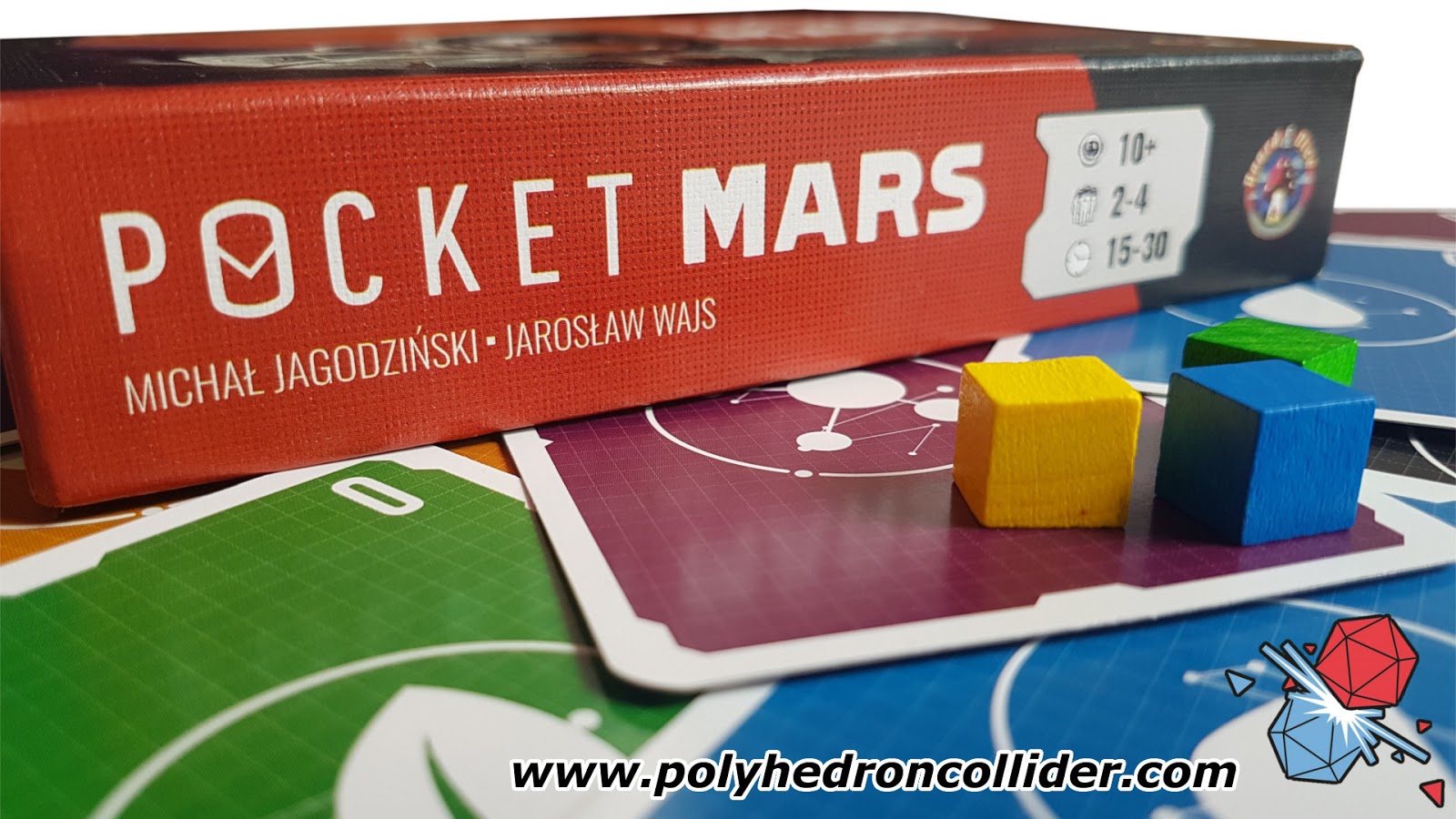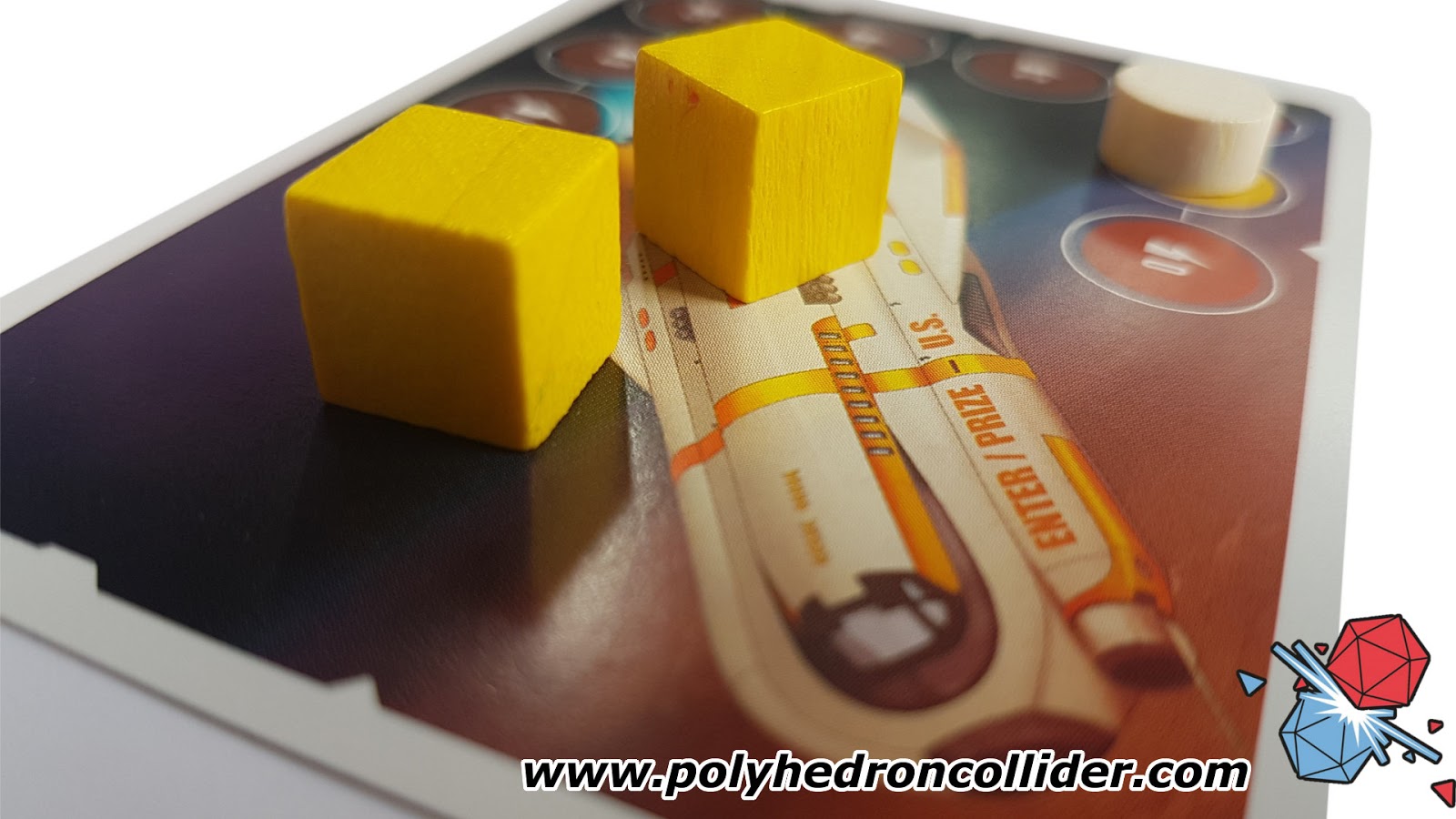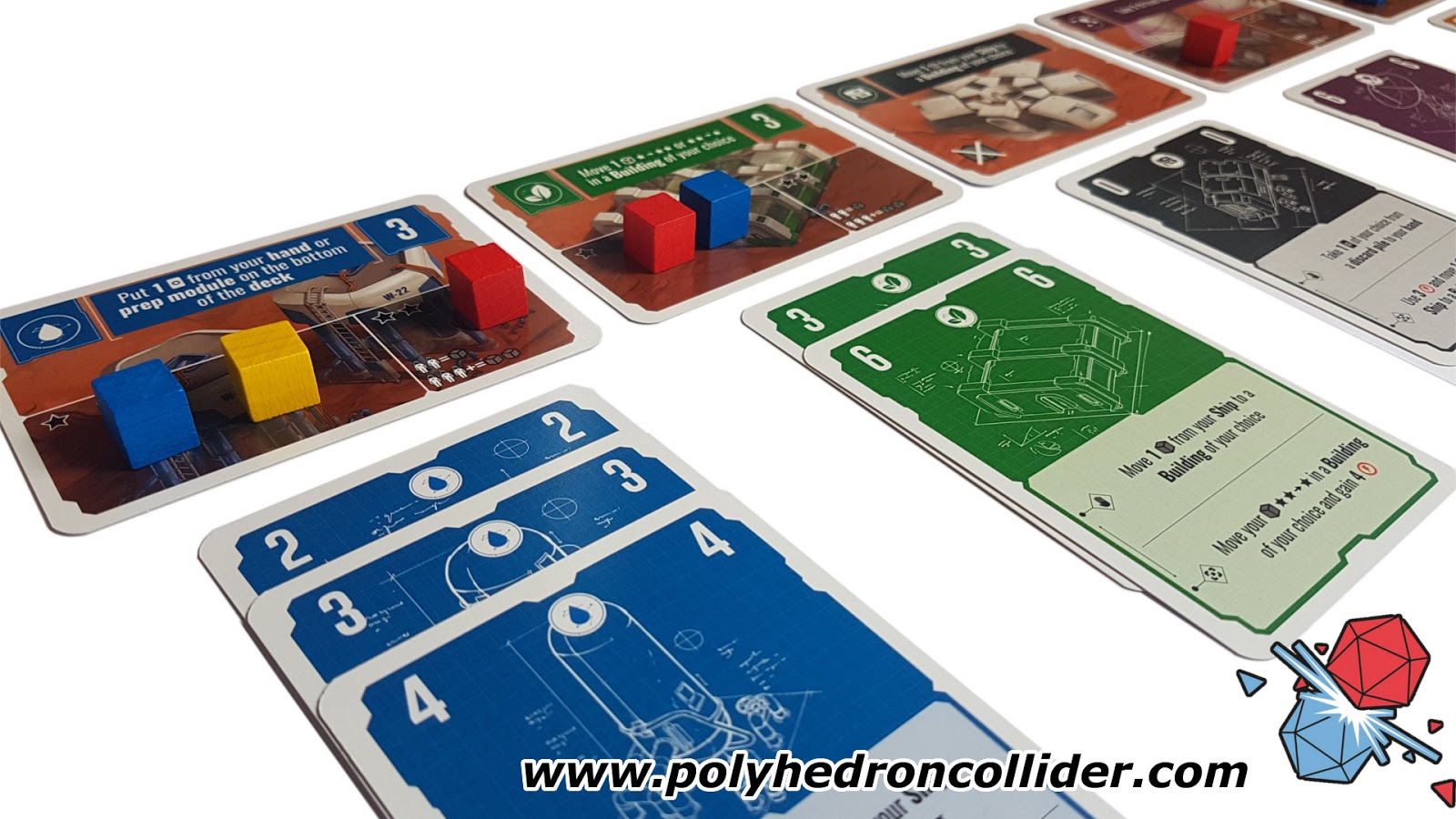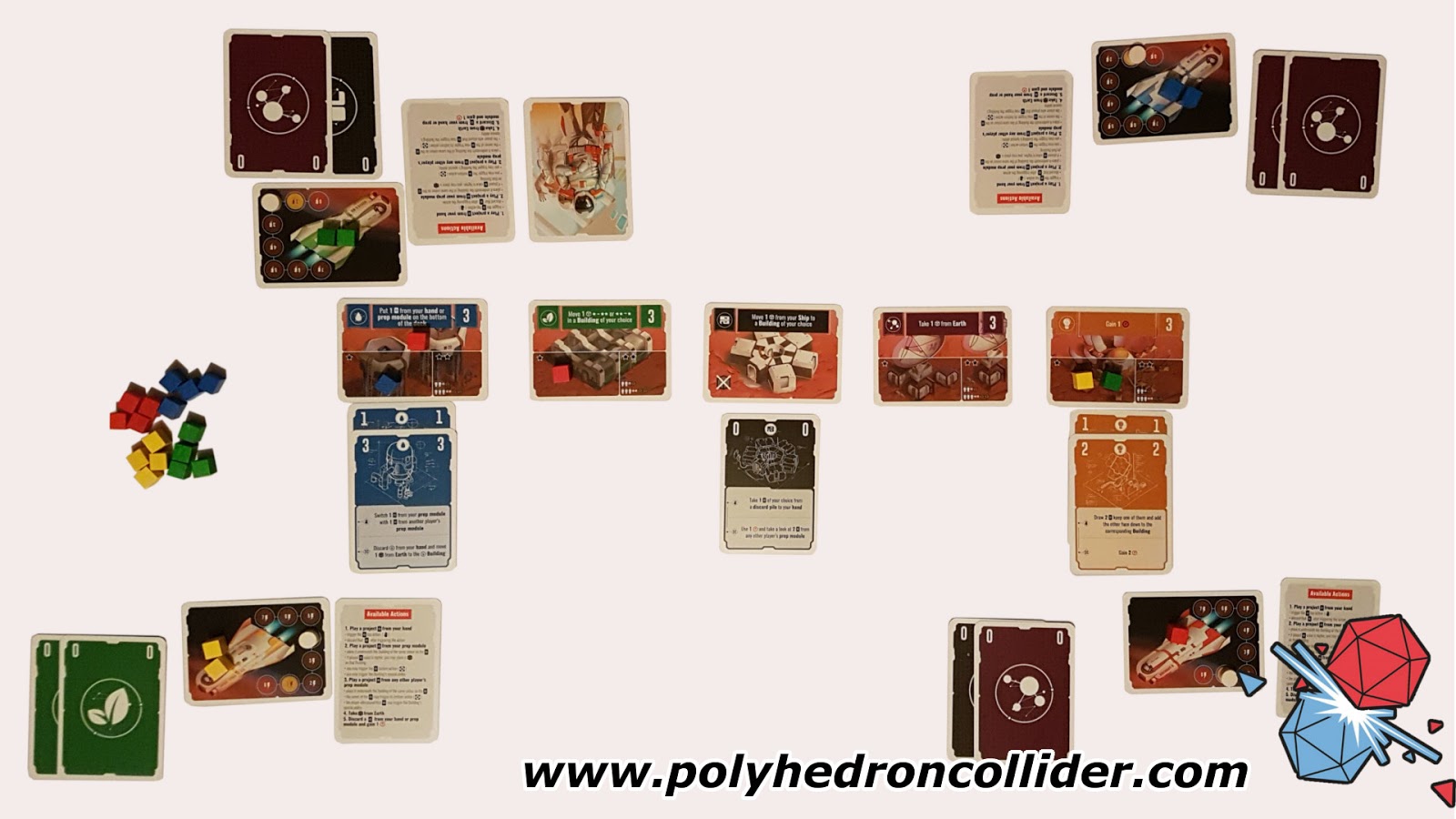Mars. The Red Planet. The Roman God of War has hung in the night sky capturing the imagination of man, and drawing the creative mind to it like gravity since it was first gazed upon. In the last few years, the fiction was left behind as science began to catch up, and we now know more about this baron and hostile planet than ever before. Yet, the more we know, it seems the more our imagination runs rampant and so the notion of the colonisation of Mars seeps into our consciousness, filling our screens, bookshelves and of course, our board games. It is in this vein that we explore Pocket Mars.
 |
| Pocket Mars: cosmic adventure awaits, inside your pocket...or something... |
Pocket Mars is a fairly simple, quick, micro hand management game from those multi-use-card-aficionados at Board & Dice who have brought us SUPERHOT, Multiversum, and InBetween. Pocket Mars sits very comfortably in the mix with those games, which although all have very different themes and even mechanics, they all, to echo Mr Tudor Mr Tudor Mr Tudor Mr Tudor), share a tonality that’s hard not to notice. So, if you like those previous games, just stop reading and go buy Pocket Mars, you’ll probably like it too. If, on the other hand, you want to know more about a game whose marketing campaign was based on growing potatoes in shit* (or as I like to call them, Poo-tatoes – Steve) then read on.
Pocket Mars pits up to four rival companies vying to be the first to establish a safe, successful, and secure colony on Mars. To do this you’ll need to transport your scientists from earth, via your shuttle to the Red Planet, and to one of the four pre-established buildings. Through the use of a series of project cards, you’ll upgrade the buildings to become more efficient and thus setting up the necessary infrastructure to support a mass colonisation. You’ll do this with a bunch of cards, some cubes and all within about 30 minutes. Which is pretty flippin’ impressive.
 |
| Enetr / Prize get it? Which one of those cubes is Will Wheaton? |
Each player begins the game with a joke-poking named shuttle with one colonist aboard and six further colonists back on Earth. The five main buildings needed to conquer the barren red landscape are in situ, so all you need to do is get them working properly. Queue the Project Cards that will do just that. These cards can be used in one of two ways, from the two cards in your hand, or from the two face-down cards in front of you known as the Prep Module.
In short, this is a game of hand management and set collecting, you’ll want to shift cards from your hand—where they have a weaker, but more immediate action which I like to think of this as maintenance your colonists are making—to your Prep Module. From here you’ll play them against one of the buildings on Mars. This is the chunkier, multi-faceted action that you’ll need to do to shift colonists from your shuttle and into a building. I like to think of this as “Installing”, you are putting new equipment into the building that it needs, thus one of your colonists needs to be there.
Now, this action makes up the bulk of the game, as the game ends when one player gets all of their colonists on to Mars, but it is also the most interesting process in the game. The Project cards are numbered (or ranked if you want to follow my analogy) from one to seven. You’ll install your card against the existing one (or the building itself), and, if your Project card has a higher score—and thus a better upgrade—you put your colonist in that building.
 |
| Its all go in the Water Building, perhaps because that's where the showers are |
You’ll then get to trigger the card’s actual ability—the thing that your Project actually does—then, because you used the building, the building’s ability also triggers. This happens even if the Project you installed is not as good as the previous version, like Windows 10, but these buildings don't use a Microsoft operating system, so it’s all good. The other interesting, little used action you can do that is very similar to this, is play a card from another player’s Prep Module. This doesn’t allow you to shift any colonists, and the other player gets the card ability, but you get the building ability AND you get to stop them placing a colonist. It is very sneaky, and feels a little off theme, but is a very worthwhile action and adds devious hint of player interaction.
 |
| Getting that slow steady spread of colonists is the key to victory in Pocket Mars |
So, what makes Pocket Mars interesting, different and worthy of your time, and/or money. Well, it’s because of what this game is really about, and that is area control. It just doesn’t really look like it, or rather, the bit that looks like area control—the cubes—isn’t the interesting area control bit of this game. Still with me?
Pocket Mars is more about controlling the cost associated with the buildings, about planning and playing ahead. By inflating, or artificially lowering the cost against a building in one turn, and with the knowledge of what type of cards the other players have in their Prep Modules, you can take advantage of this supply of information. What the card can do is only one small part of the information you need to be able to counter or block other players. What type of card, and more importantly where that card is, is actually more important. And you can see all of this at a glance.
It is the almost perfect information that makes this game so quick, but not at the expense of strategy. To score well, you need to have an even spread of colonists across Mars, you’ll want to get some of them into the “office” of each building too. So, control the costs and you’ll control a piece of Mars, but really you need to control lots of different pieces at different times.
 |
| The Yellow one is Matt Damon |
That’s not to say that this game isn’t without its flaws, and despite being a self-confessed Board & Dice fan, this game does fall particularly foul of a recurring ‘issue’ I have with their games, namely; abstraction. Theme and the implementation of the mechanics are abstracted from what they’re “meant to be”, this does make this game a little less accessible I find, and when introducing this game to people, as I have done so in this review, I feel I have to add the character and descriptions/context to actions. This is amplified by the condensed rulebook which is almost completely bereft of flavour, reducing this game of celestial colonisation down to little more than its bare bones. The austere un-named cards with their stark graphic ‘art’, the buildings are only named on the last page of the rulebook and Matt Damon is indistinguishable from his fellow scientists. All of this leads to a fairly abstract game of layering cards and shifting cubes. But...
 |
| In Play from above |
But, all of that is okay when you step away from the telescope and look at what you have with a little bit of distance. You’ve got a very small, cheap, four-player game which has some interesting mechanics, choices and interactions. It even has a solo mode. It is a perfect little thinker of a game for lunch breaks or to travel with and for the damage it’ll do to your wallet and game shelf this game provides a mini exploration to Mars in half an hour. Pocket Mars may not be the slice of Mars game you’ve been waiting to try, but it is still a short, worthwhile game.
*Just go watch the brilliant Martian and it will all make sense.
This review is based on a full retail copy of the game provided by the publisher.


No comments:
Post a Comment